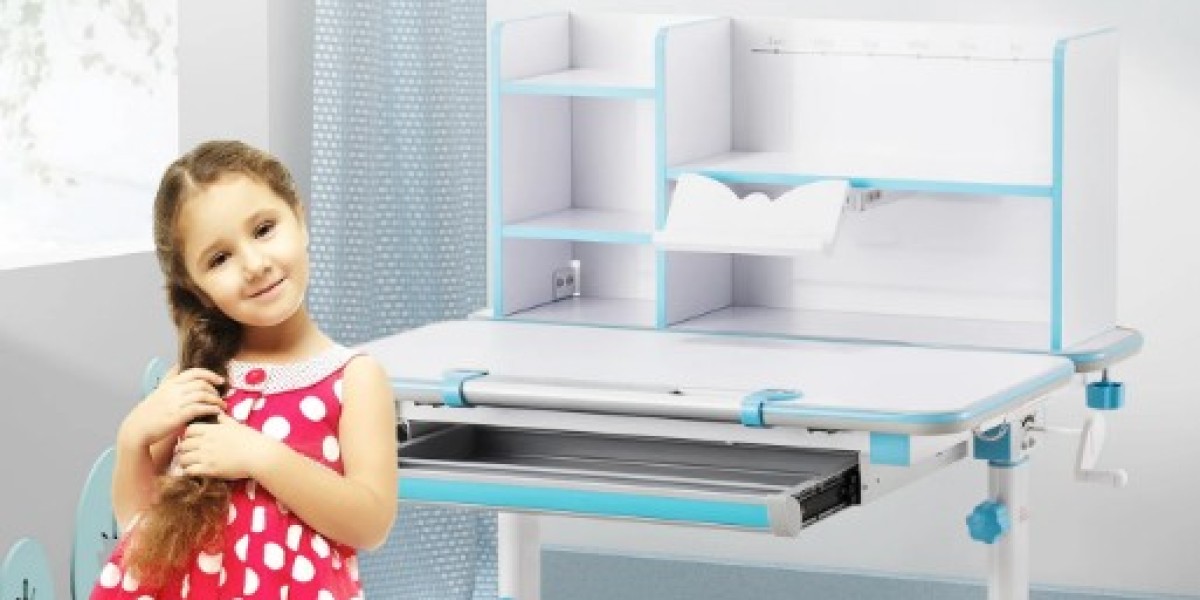As children grow, their needs evolve, and providing the right environment for their physical and mental development is essential. For a 6-year-old, a comfortable and ergonomic study table and chair can significantly enhance their ability to focus, learn, and develop good posture. Choosing the right study table and chair for a 6 year old? This article will explore the importance of choosing the right study table and chair, factors to consider, and recommendations for parents.
Importance of a Study Table and Chair for a 6-Year-Old
At the age of six, children typically begin their formal education journey. This stage is crucial for developing habits that will last a lifetime, including study routines and posture. A dedicated study space with a suitable table and chair offers several benefits:
Encourages Focus and Concentration: A designated study area minimizes distractions and helps children associate the space with learning and productivity.
Promotes Good Posture: Poor posture in childhood can lead to long-term health issues such as back pain and spinal problems. Ergonomically designed furniture supports the natural curves of the spine and ensures comfort.
Enhances Learning: A comfortable and organized workspace fosters a positive learning environment, encouraging children to spend more time studying and engaging in creative activities.
Teaches Responsibility: Having their own study area instills a sense of ownership and responsibility in children, motivating them to keep their space tidy and organized.
Factors to Consider When Choosing a Study Table and Chair
Selecting the right furniture for a 6-year-old involves careful consideration of several factors to ensure comfort, safety, and functionality. Here are the key aspects to keep in mind:
1. Size and Dimensions
Table Height: The height of the table should be appropriate for the child’s stature. Ideally, the table surface should be at the level of the child’s elbow when seated.
Chair Height: The chair’s height should allow the child’s feet to rest flat on the ground, with knees bent at a 90-degree angle.
2. Ergonomics
Choose furniture designed to support proper posture. The chair should have a backrest that supports the lower back, and the table should allow enough legroom for the child to sit comfortably.
3. Adjustability
Look for adjustable tables and chairs that can grow with the child. Adjustable furniture is a cost-effective option as it accommodates the child’s growth over several years.
4. Durability and Material
Opt for sturdy materials such as wood, metal, or high-quality plastic that can withstand regular use. Avoid sharp edges or corners to prevent injuries.
5. Aesthetics and Design
Bright and cheerful designs can make the study space more inviting for a child. However, avoid overly distracting patterns or colors that may hinder focus.
6. Storage Options
Tables with built-in storage such as drawers, shelves, or compartments help keep books, stationery, and other study materials organized and within reach.
7. Safety Features
Ensure the furniture is free of toxic materials and has a stable design to prevent tipping over. Non-slip pads on chair legs can enhance safety.
8. Space Considerations
Measure the available space in the child’s room or study area to ensure the furniture fits comfortably without overcrowding the room.
Types of Study Tables and Chairs for 6-Year-Olds
There are various options available in the market to suit different needs and preferences. Below are some popular types:
1. Basic Study Table and Chair Sets
These sets typically include a simple table and a matching chair, ideal for parents looking for a budget-friendly option.
2. Height-Adjustable Sets
Adjustable tables and chairs offer flexibility, allowing the furniture to adapt to the child’s growth. This type is highly recommended for long-term use.
3. Multi-Functional Tables
These tables come with features like tiltable surfaces for drawing or reading, storage compartments, and built-in organizers. They are perfect for children with varied interests.
4. Themed Furniture
Themed tables and chairs featuring popular cartoon characters or animals can add a fun element to the child’s study area.
5. Portable Folding Sets
Lightweight and foldable furniture is convenient for families who need a space-saving solution or prefer movable options.
Setting Up the Study Area
Once you’ve selected the right study table and chair, setting up the space thoughtfully can enhance its functionality. Here are some tips:
Proper Lighting: Ensure the study area is well-lit to prevent eye strain. A desk lamp with adjustable brightness can be a great addition.
Organized Layout: Keep frequently used items within reach and use organizers to declutter the space.
Personal Touch: Allow the child to decorate their study area with stickers, photos, or small decorations to make it more inviting.
Quiet Environment: Place the study area in a quiet part of the house, away from distractions like TV or loud noises.
Maintenance Tips
To ensure the longevity of the study table and chair, follow these maintenance tips:
Regular Cleaning: Wipe the surfaces with a damp cloth to remove dust and stains.
Check for Wear and Tear: Periodically inspect the furniture for loose screws or damages and repair them promptly.
Encourage Careful Use: Teach your child to use the furniture responsibly to minimize accidental damage.
Conclusion
Investing in the right study table and chair for a 6-year-old is a crucial step in supporting their educational journey and overall development. By considering factors like ergonomics, adjustability, and safety, parents can create an inviting and functional study space that fosters good habits and a love for learning. Remember, the goal is to provide a comfortable and inspiring environment that encourages the child to reach their full potential.











